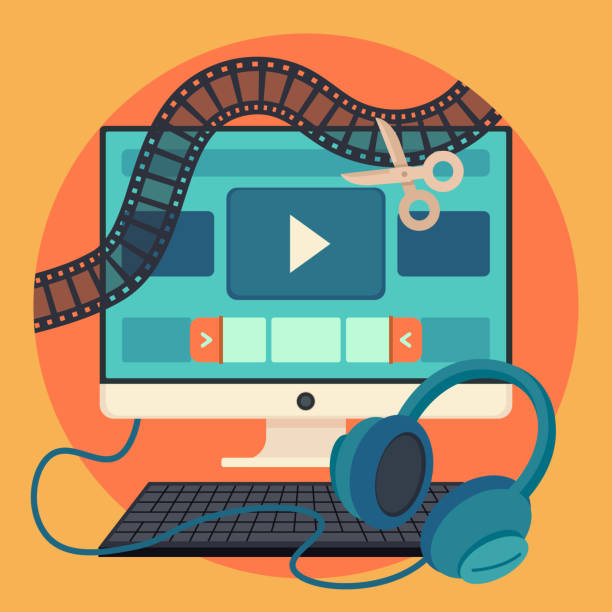The step-by-step guide for executing events with audio visual charlotte nc
Comprehending the Inclusion of Audio Visual Modern technology in Today's Educational Environments
The combination of audio-visual modern technology in academic setups has actually transformed the training and discovering procedure. Educators now have accessibility to devices that provide to different discovering styles, boosting trainee engagement and cooperation. The unification of these innovations offers both chances and challenges. Recognizing exactly how to effectively carry out these devices is necessary. What methods can instructors employ to make the most of the advantages of audio-visual modern technology in their classrooms?
The Evolution of Audio-Visual Technology in Education
As educational demands developed over the years, audio-visual technology went through significant improvements that reshaped the knowing atmosphere. At first, devices such as movie projectors and slide programs were the primary means of incorporating visual components right into class. These early modern technologies supplied teachers with the ability to present details dynamically, yet they were restricted in ease of access and interactivity.
With the arrival of video cassette recorders in the 1970s, class began to include documented lessons, broadening the range of educational sources. The introduction of individual computers in the 1980s additional reinvented this landscape, permitting the creation of multimedia discussions and interactive discovering experiences.
The increase of the net in the 1990s marked a zero hour, allowing real-time access to a wealth of audio-visual materials. Today, digital tools such as interactive whiteboards and online learning platforms remain to enhance the instructional experience, promoting involvement and partnership among students.
Advantages of Audio-Visual Equipment for Diverse Knowing Styles
Audio-visual tools play an essential role in accommodating varied understanding styles by improving aesthetic learning and improving acoustic interaction. By integrating images, video clips, and noise, these technologies develop a more comprehensive academic environment. This complex technique allows teachers to address the diverse preferences and demands of students successfully.
Enhancing Visual Learning
Interaction in the knowing process is noticeably boosted with the use of audio-visual tools, satisfying numerous finding out styles. These devices, such as video clips, infographics, and interactive presentations, offer visual stimuli that assist understanding and retention. Visual learners, specifically, take advantage of the unification of pictures and computer animations, which can simplify complicated ideas and boost understanding. Additionally, audio-visual resources can highlight real-world applications, making discovering more pertinent and appealing. By integrating color, movement, and sound, instructors can develop a vibrant learning setting that captures pupils' focus and fosters much deeper cognitive connections. Ultimately, the calculated use audio-visual innovation not only sustains aesthetic understanding however likewise enriches the total academic experience for varied learners.
Improving Auditory Involvement
A significant benefit of including audio-visual tools in education is their ability to boost acoustic engagement amongst students. These devices, which incorporate multimedia discussions, podcasts, and interactive audio aspects, satisfy various learning styles, especially profiting auditory learners (audio visual charlotte nc). By incorporating sound and narrative, instructors can develop immersive experiences that record pupils' focus and strengthen comprehension. This engagement is vital, as it promotes a deeper understanding of the material and advertises retention. In addition, audio-visual devices can promote joint discovering settings, urging pupils to take part in discussions and share their insights. Ultimately, the consolidation of audio-visual innovation not only sustains acoustic engagement but also improves the total instructional experience, making discovering extra dynamic and effective for all students
Enhancing Engagement Through Interactive Knowing
Furthermore, gamification aspects, such as tests and simulations, can improve inspiration and retention, making discovering more enjoyable and efficient. These approaches not just stimulate cognitive engagement yet also accommodate varied knowing designs, guaranteeing that all trainees can get involved meaningfully. As a result, interactive knowing atmospheres cultivate a feeling of area and belonging, ultimately resulting in enhanced academic results. With the assimilation of audio aesthetic modern technology, educators can transform typical classrooms into dynamic rooms where trainees prosper and proactively form their educational journeys.
Connecting Theory and Experiment Multimedia Resources
Multimedia resources act as an essential web link between theoretical principles and functional application in educational setups. By boosting engagement, assisting in joint understanding experiences, and supporting diverse discovering designs, these tools develop an extra inclusive and dynamic knowing environment - audio visual charlotte nc. This method not only cultivates much deeper understanding however likewise prepares trainees for real-world difficulties

Enhancing Interaction Through Multimedia
Engagement in instructional settings considerably enhances when instructors include multimedia sources into their training methods. Using video clips, podcasts, and interactive discussions enhances the learning experience, permitting trainees to get in touch with the material on numerous degrees. Multimedia sources provide to numerous discovering styles, giving aesthetic, auditory, and kinesthetic stimuli that can hold trainees' focus much more efficiently than traditional lecture approaches. Furthermore, these resources can streamline complex principles, making them a lot more available and remarkable. By integrating multimedia, teachers can develop a dynamic class environment that promotes curiosity and inspires students. Eventually, the tactical use audio-visual innovation offers to connect the gap between theoretical understanding and sensible application, enhancing the academic experience for both teachers and pupils.
Helping With Collaborative Knowing Experiences
Numerous researches suggest that collective understanding experiences considerably boost student outcomes when integrated with multimedia sources. Multimedia tools assist in interaction among trainees, allowing them to take part in problem-solving and important assuming collectively. By using video clip conferencing, collective platforms, and interactive presentations, teachers produce environments favorable to synergy and shared knowing. These innovations allow trainees to interact their ideas efficiently and obtain prompt feedback, fostering a deeper understanding of the topic. In addition, multimedia sources read more can provide intricate principles in even more absorbable formats, advertising discussion and partnership. As an outcome, the mix of joint discovering and audio-visual technology not only enriches the educational experience but likewise prepares trainees for real-world team effort dynamics, emphasizing the value of collaboration and collective understanding construction.
Supporting Diverse Learning Styles
While traditional training approaches frequently deal with a minimal series of finding out choices, the combination of audio-visual innovation offers a more inclusive strategy to education and learning. By utilizing multimedia sources such as videos, interactive simulations, and digital discussions, instructors can attend to different learning designs, consisting of visual, auditory, and kinesthetic. This adaptability permits set apart direction, allowing trainees to engage with content in ways that resonate with their private choices. Furthermore, audio-visual devices can promote deeper understanding by offering several depictions of complicated principles. As an outcome, trainees that may deal with standard methods can locate different paths to success, fostering a much more fair discovering setting that supports academic accomplishment for all learners.
Obstacles in Executing Audio-Visual Modern Technology
Although audio-visual innovation holds excellent promise for boosting instructional experiences, its application often runs into substantial difficulties. One main issue is the economic worry connected with investing in and maintaining such equipment, which can stress spending plans, specifically in underfunded institutions. In addition, poor training for instructors can impede effective integration, leaving them ill-prepared to utilize the technology fully. Technical issues, such as software malfunctions and compatibility problems, may also disrupt lessons and annoy both teachers and students. Moreover, varying levels of trainee accessibility to innovation outside the class can develop disparities in learning possibilities. The possibility for over-reliance on innovation may take away from important mentor methods, eventually restricting the educational experience. Addressing these obstacles needs a complete method, including adequate financing, expert advancement, and equitable accessibility to resources, to guarantee that audio-visual technology can be leveraged properly in today's academic settings.
Ideal Practices for Integrating Innovation in the Class

Additionally, fostering an interactive atmosphere with collective tools encourages student interaction and engagement. Making use of varied audio-visual resources deals with numerous discovering styles, accommodating visual, auditory, and kinesthetic students. Routinely assessing the impact of innovation on trainee discovering assists teachers improve their techniques and adjust to altering needs. Including students in the choice of technology advertises ownership and inspiration. By sticking to these best methods, instructors can develop a vibrant classroom environment that effectively integrates innovation and boosts the instructional experience for all students.
The Future of Audio-Visual Innovation in Education And Learning
As classrooms significantly accept technology, the landscape of audio-visual tools in education and learning remains to develop (audio visual charlotte nc). Future advancements are expected to concentrate on higher interactivity and personalization, enabling teachers to tailor learning experiences to specific pupil demands. Innovations such as enhanced reality (AR) and virtual truth (VIRTUAL REALITY) will likely provide immersive understanding environments, boosting trainee involvement and understanding
Man-made knowledge (AI) is poised to play a considerable function in audio-visual technology by using real-time feedback and flexible understanding paths. This integration might aid teachers determine and resolve student difficulties extra effectively. Cloud-based platforms will assist in simpler accessibility to sources and cooperation among students and instructors, no matter of area.
Along with these technical advancements, specialist advancement for educators will certainly be important, guaranteeing they are outfitted to make use of these devices effectively. On the whole, the future of audio-visual technology in education promises to produce even more vibrant, comprehensive, and impactful understanding experiences.
Frequently Asked Inquiries
Just How Can Teachers Choose the Right Audio-Visual Equipment for Their Classrooms?
Picking proper audio-visual devices needs teachers to examine their educational objectives, consider pupil needs, assess available technology, and look for recommendations from peers or experts, guaranteeing tools effectively boost knowing and engagement within their details class atmosphere.
What Budget Considerations Are There for Applying Audio-Visual Modern Technology?
Budget plan considerations for applying audio-visual modern technology include initial acquisition expenses, maintenance expenditures, training for personnel, and potential software program licensing charges. Additionally, long-term investment in updates and substitutes should additionally be factored into financial preparation.
Are There Certain Training Resources for Teachers on Audio-Visual Devices?
Numerous organizations provide training sources for instructors on audio-visual tools, consisting of online training courses, workshops, and educational guides. These resources intend to boost instructors' skills and self-confidence in successfully incorporating innovation right into their training practices.
Just how Do We Gauge the Performance of Audio-Visual Modern Technology in Discovering?
Measuring the efficiency of audio-visual technology in discovering entails examining student involvement, comprehension, retention rates, and total scholastic performance. Surveys, evaluations, and empirical studies can supply beneficial insights into its effect on instructional outcomes.
What Are Typical Misconceptions Regarding Audio-Visual Innovation in Education?
Typical false impressions regarding audio-visual modern technology in education and learning include the belief that it ensures interaction and finding out end results, in addition to the presumption that all pupils profit equally, neglecting private understanding choices and demands.